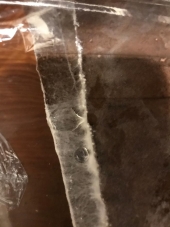




Graciously appreciated Have a Fungi day

 1
1








Check out Redhawk's soil series: https://permies.com/wiki/redhawk-soil




Graciously appreciated Have a Fungi day




Check out Redhawk's soil series: https://permies.com/wiki/redhawk-soil
 2
2








Graciously appreciated Have a Fungi day




Check out Redhawk's soil series: https://permies.com/wiki/redhawk-soil
 1
1




Graciously appreciated Have a Fungi day




Graciously appreciated Have a Fungi day

 1
1




Casie Becker wrote:One of the first things you will need is a good business plan.




 1
1




 5
5




For more information about old-fashioned biological agriculture please visit: www.agriculturesolutions.wordpress.com -or- www.worldagriculturesolutions.com -or- send your questions to: Agriculture Solutions, 413 Cedar Drive, Moon Township, Pennsylvania, 15108 USA -- or -- send an e-mail to: Eric Koperek = erickoperek@gmail.com








 Please send me an e-mail if you have any questions or require additional information.
Please send me an e-mail if you have any questions or require additional information.
For more information about old-fashioned biological agriculture please visit: www.agriculturesolutions.wordpress.com -or- www.worldagriculturesolutions.com -or- send your questions to: Agriculture Solutions, 413 Cedar Drive, Moon Township, Pennsylvania, 15108 USA -- or -- send an e-mail to: Eric Koperek = erickoperek@gmail.com
 2
2




Check out Redhawk's soil series: https://permies.com/wiki/redhawk-soil
 1
1








dawn knight wrote:The ingenious way that shroom spores and certain other fungi fire spores into the atmosphere in order to reproduce has been mimicked by a team of engineers and fungal biologists. These organisms disperse billions or even trillions of spores so that enough land in a suitable environment for them to reproduce.
Each Spore Syringe is loaded with shroom spores https://thesporedepot.com/. 100% Guaranteed Customer Satisfaction




www.MicroEcoFarming.com
www.RegenerativeAgrarian.com

|
Are we home yet? Wait, did we forget the tiny ad?
The new permaculture playing cards kickstarter is now live!
https://www.kickstarter.com/projects/paulwheaton/garden-cards
|






